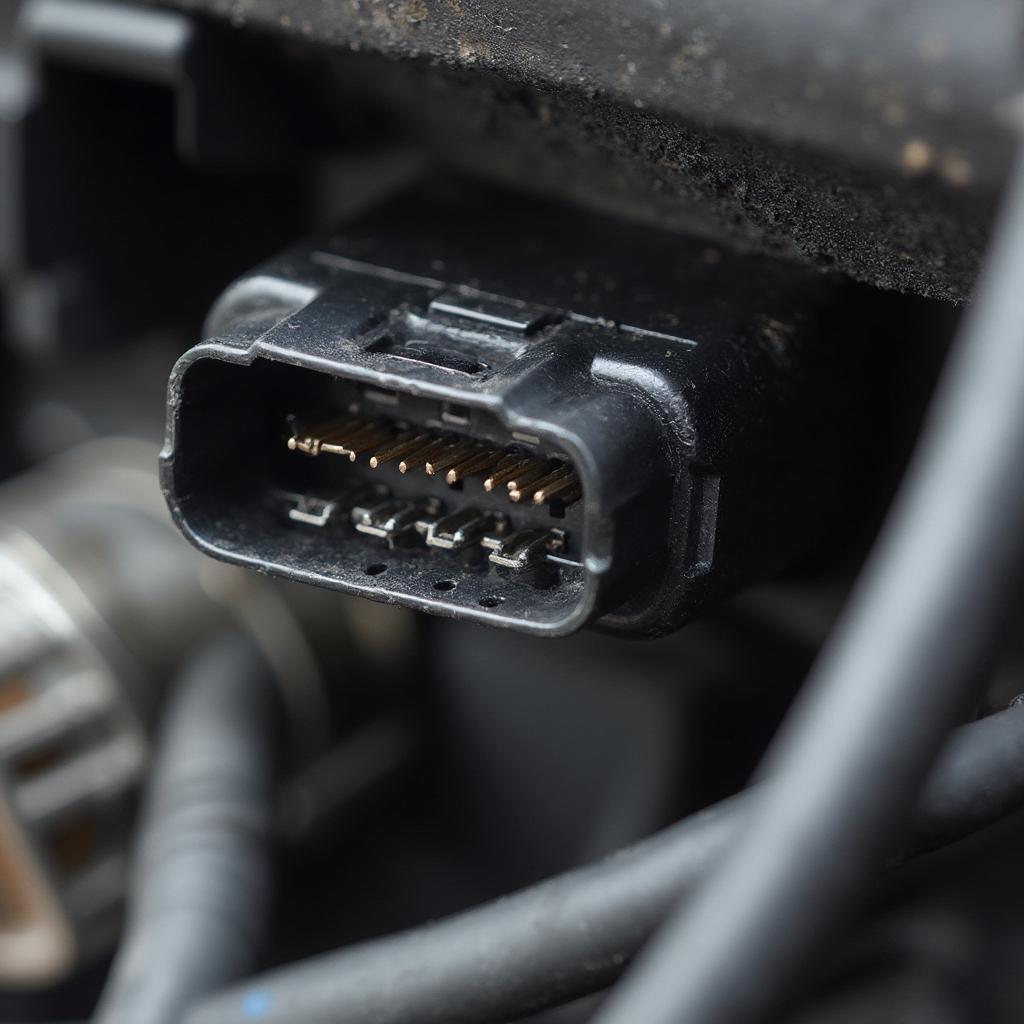OBD2 sensors are the unsung heroes of your vehicle’s diagnostic system. They constantly monitor various aspects of your car’s performance, providing crucial data that helps keep your engine running smoothly and efficiently. Understanding how these sensors work and what they tell you is key to maintaining your vehicle’s health and avoiding costly repairs.
What is an OBD2 Sensor?
An OBD2 sensor, or On-Board Diagnostics II sensor, is a critical component of your car’s computer system. These small electronic devices are strategically placed throughout the engine and other key systems, continuously monitoring everything from exhaust emissions to fuel efficiency. They transmit this data to the car’s computer, which uses it to adjust engine performance and alert you to potential problems via the dashboard warning lights. Think of them as your car’s internal health checkers, constantly taking its pulse and reporting back.
 OBD2 Sensor Close Up
OBD2 Sensor Close Up
How OBD2 Sensors Work
These sensors work by converting physical parameters, like temperature or pressure, into electrical signals that the car’s computer can understand. Different types of OBD2 sensors monitor different parameters. For instance, the oxygen sensor measures the oxygen content in the exhaust gases, while the mass airflow sensor measures the amount of air entering the engine. This information is crucial for the computer to calculate the correct air-fuel mixture for optimal combustion and reduced emissions. obd2 sensor 1996 buick century provides more information on specific vehicle applications.
Different Types of OBD2 Sensors
There are numerous types of OBD2 sensors, each with a specific role. Some of the most common include:
- Oxygen Sensor (O2 Sensor): Measures the oxygen content in the exhaust gases.
- Mass Airflow (MAF) Sensor: Measures the amount of air entering the engine.
- Manifold Absolute Pressure (MAP) Sensor: Measures the pressure in the intake manifold.
- Coolant Temperature Sensor (CTS): Measures the engine coolant temperature.
- Throttle Position Sensor (TPS): Measures the position of the throttle valve.
- Camshaft Position Sensor (CMP): Determines the position of the camshaft.
- Crankshaft Position Sensor (CKP): Determines the position of the crankshaft.
Why are OBD2 Sensors Important?
OBD2 sensors are essential for several reasons:
- Emissions Control: They help ensure your car meets emissions standards by monitoring and adjusting the air-fuel mixture.
- Fuel Efficiency: By optimizing combustion, they contribute to better fuel economy.
- Engine Performance: Accurate sensor data allows the engine to run smoothly and efficiently.
- Diagnostics: They provide crucial information for diagnosing engine problems, saving you time and money on repairs. what can obd2 sensors detect provides a deeper look into this.
Common OBD2 Sensor Problems
Like any other car part, OBD2 sensors can fail. Some common signs of a faulty sensor include:
- Check Engine Light: This is the most common indicator of a sensor problem.
- Reduced Fuel Economy: A failing sensor can disrupt the air-fuel mixture, leading to increased fuel consumption.
- Rough Idling or Stalling: A faulty sensor can cause the engine to idle roughly or stall.
- Decreased Performance: You might notice a loss of power or acceleration.
How to Troubleshoot OBD2 Sensor Issues
An OBD2 scanner can help pinpoint the faulty sensor by reading the diagnostic trouble codes (DTCs) stored in the car’s computer. You can find more information about this in are obd2 sensors arm. For specific locations, obd2 sensor plug location 2004 pilot can be helpful.
Conclusion
OBD2 sensors are vital for the proper functioning of modern vehicles. Understanding their role and how they work can help you maintain your car’s health, improve fuel efficiency, and avoid costly repairs. Regularly checking your car’s OBD2 system is a smart way to ensure optimal performance and longevity.
FAQ
- What does OBD2 stand for? On-Board Diagnostics II.
- How many OBD2 sensors are in a car? This varies depending on the make and model, but typically there are dozens.
- How do I know if an OBD2 sensor is bad? Common signs include a check engine light, reduced fuel economy, and rough idling.
- Can I replace an OBD2 sensor myself? Yes, in many cases, you can replace them yourself with basic tools.
- How much does an OBD2 sensor cost? Prices vary depending on the type of sensor and the car model.
- Where are OBD2 sensors located? They are located throughout the engine and other key systems.
- How often should I check my OBD2 system? It’s a good idea to check it whenever you notice any unusual performance issues or at least once a year.
Need help? Contact us via WhatsApp: +1(641)206-8880, Email: [email protected] or visit us at 789 Elm Street, San Francisco, CA 94102, USA. We have a 24/7 customer support team.